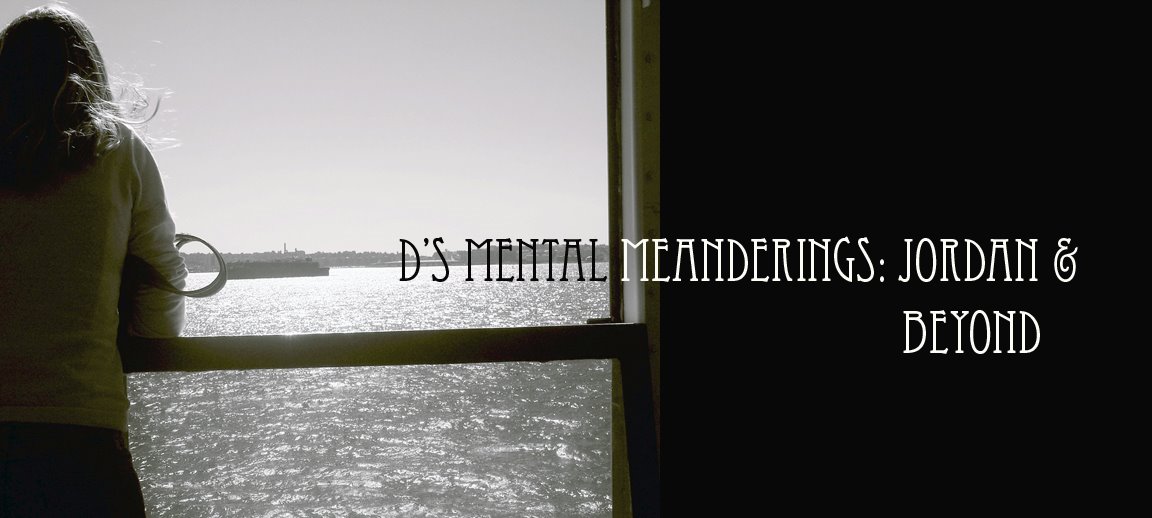Abroad
By MICHAEL KIMMELMAN
ZURICH
 SWITZERLAND stunned many Europeans, including not a few Swiss, when near the end of last year the country, by referendum, banned the building of minarets. Much predictable tut-tutting ensued about Swiss xenophobia, even though surveys showed similar plebiscites would get pretty much the same results elsewhere.
SWITZERLAND stunned many Europeans, including not a few Swiss, when near the end of last year the country, by referendum, banned the building of minarets. Much predictable tut-tutting ensued about Swiss xenophobia, even though surveys showed similar plebiscites would get pretty much the same results elsewhere. A poster was widely cited as having galvanized votes for the Swiss measure but was also blamed for exacerbating hostility toward immigrants and instigating a media and legal circus. “We make posters, the other side goes to the judge,” is how Alexander Segert put it when we met here the other day. “I love it when they do that.”
He designed the poster in question. As manager of Goal, the public relations firm for the Swiss People’s Party, Mr. Segert has overseen various campaign posters. This one, for the referendum, used minarets rising from the Swiss flag like missiles (“mushrooms,” Mr. Segert demurred, implausibly). Beside the missiles a woman glowers from inside a niqab. “Stop” is written below in big, black letters.
The obvious message: Minarets lead to Sharia law. Never mind that there are only four minarets in Switzerland to begin with, and that Muslims, some 340,000 of them, or 4 percent of the population, mostly from the Balkans and Turkey, have never been notably zealous.
In this heavily immigrant country the ultranationalist Swiss People’s Party is now the leading political party, aided at the polls by incidents like the New Year’s Day attack by a Somali Muslim immigrant in Denmark on Kurt Westergaard, the artist whose caricature of the Prophet Mohammad with a bomb in his turban was among the cartoons published in 2005 in a Danish newspaper that provoked violent protests around the world. All across Europe populist parties are growing, capitalizing, to an extent unknown across the Atlantic, on a very old-fashioned brand of propaganda art. The dominance in America today of the 24-hour cable news networks and the Internet, the sheer size of the country, the basic conventions of public discourse, not to mention that the only two major parties have, or at least feign having, a desire to court the political center, all tend to mitigate against the sort of propaganda that one can now find in Europe.
It manages, if often just barely, to skirt racism laws. In Italy, where attacks on immigrant workers in the Calabrian town of Rosarno this month incited the country’s worst riots in years, the Lega Nord, part of Prime Minister Silvio Berlusconi’s ruling coalition, has circulated various anti-immigrant posters. One, mimicked by Jean-Marie Le Pen’s far-right National Front Party in France, showed an American Indian to make the point that immigrants will soon turn Europeans into embattled minorities stuck on reservations.
The National Front also distributed a poster of Charles de Gaulle alongside a remark he once made (in the context of the Algerian occupation) to suggest that true Gaullists today would vote for Le Pen. “It is good that there are yellow Frenchmen and black Frenchmen and brown Frenchmen,” de Gaulle is quoted as saying. “They prove that France is open to all races,” adding, “on the condition that they remain a small minority. Otherwise, France will no longer be France.”
In Austria the far-right Freedom Party has come up with a poster bearing the slangy slogan: “Daham Statt Islam, Wir Für Euch” (roughly, Home Instead of Islam, or Islam Go Home, We Are for You). And Britain’s neo-Nazi National Party, which, to the great embarrassment of the country’s political leaders, lately won two seats on the European Parliament, swiped the minaret poster by switching the Swiss flag for a Union Jack. Mr. Segert and the Swiss People’s Party weren’t too pleased, populists being one thing, neo-Nazis, another.
It may be hard for Americans to grasp the role these images can play here. In subways and on the streets in America, posters and billboards are eye-catching if sexy or stylish, like Calvin Klein’s advertisements, or if modish and outrageous, like Benetton’s, but they’re basically background noise. By contrast, they’re treated more seriously here, as news, at least when they’re political Molotov cocktails. Cheap to produce compared with television commercials and easy to spread in small countries like Switzerland, where referendums are catnip to populists, they have the capacity to rise above the general noise.
Mr. Segert is the de facto reigning minister of such propaganda. He has used red rats to caricature Swiss leftists. He came up with an image of black and brown hands riffling through a stack of Swiss passports. And (until the minaret poster, this one caused the biggest kerfuffle) he cooked up the idea of three fluffy white sheep kicking a black sheep off the Swiss flag. “For More Security” was the accompanying slogan.
Cries of racism, occasional legal proceedings — none of which ended up in fines against him, Mr. Segert hastens to point out — and even bans on their display in left-leaning cities like Basel and Geneva, have only increased the reproduction of the images. All of which, as Mr. Segert said, suits him and his bosses just fine.
“If what we do stirs up controversy, then we’ve already won the election,” he told me, a thought echoed when I met with Marc Bühlmann, a political scientist here. “All these right-wing populist parties have learned to get TV and newspapers to show these posters over and over with the excuse of asking, ‘Should we allow such images?’ ” Mr. Bühlmann said. “The aim in making the posters is to be as racist as possible, so then when critics complain, the populists can say elites don’t want ordinary people to know the truth. And the media fall for it every time.”
Mr. Segert wouldn’t disagree. Crude, cleverly exploiting the ancient power of a still picture over moving ones to fix an image in a viewer’s mind, the posters share a calculated homeliness and violence that is in its own way artful. I showed a variety of them to Jacques Séguéla, chief creative officer for France’s second-largest advertising agency, who ran François Mitterrand’s presidential campaign.
“Fifty percent Stalin, 50 percent Norman Rockwell,” was his assessment. “The images are aggressive, not funny, without charm, straight to the point, clear and” — he was speaking aesthetically here — “in no way radical. They’re the opposite of most advertising today. They aim just at their target audience.”
And that’s all they need to do. Marcus Stricker, creative director of Netprinz, which handles advertising for Switzerland’s Free Democratic Party, a competitor of Mr. Segert’s, credits the minaret poster with employing a bygone graphic style that conjures up “good old Switzerland, when everything was safe, clean and growing.” Like Mr. Bühlmann he blames the news media for providing, as he put it, “effectively millions of dollars in free advertising.” It went without saying that my own interest in the poster brouhaha multiplied the problem.
He was nevertheless reluctant to give Mr. Segert too much credit for swinging the vote. Local issues did more to sway public opinion, he said. We met in a crowded bar above the Zurich train station, and before parting he unfurled a poster by a human rights organization called the Society for Swiss Minorities, distributed by the Swiss Council of Religions, showing a mosque, a synagogue, two churches and a Buddhist temple beneath a broad, pale blue sky, with the slogan “Der Himmel über der Schweiz ist gross genug” (“the sky over Switzerland is big enough”) in discreet lettering across the top.
It was made to compete with Mr. Segert’s work. Two can play that game, Mr. Stricker wanted me to know. Except that the image, tasteful and vague, stressing elegance over incitement, actually suggested the opposite.
Mr. Segert knows why. A 46-year-old German (yes, an immigrant himself in Switzerland), he is the father of two adopted children from North Africa, although he declined to talk about his personal life. He was happy, on the other hand, to discuss work, which he volunteered he would gladly do for the Green Party or Social Democrats, if they hired him. “For me it’s an intellectual exercise,” he said, as if cynicism were a point of professional pride.
In the next room young, clean-cut associates brooded over drawing boards and computer screens. Clients must “do their homework,” Mr. Segert said, by way of explaining how a design evolves. “It sounds easy, but most political parties don’t know their own message.” That’s the problem for centrist and many left-leaning parties.
By contrast, “everyone knows what the Swiss People’s Party stands for,” he said. “It’s against the European Union, for neutrality, lower taxes, no illegal aliens. You can hate it or love it, but the message is clear.” That message must then be refined. “Maybe 80 to 90 percent of people are not interested in elections. So our job is to tell them: Be interested in what doesn’t interest you, make a decision about something you don’t care about, then act on it, vote. That’s a lot for a poster to accomplish. We’re successful because we know how to reduce information to the lowest level, so people respond without thinking.”
This was essential, he stressed: “The message must go straight to the stomach, not to the brain, and connect with specific emotions involving fear, health, money, safety. We can focus just on our target audience so we can speak in a special language and speak to a feeling these people already have. We can’t move anyone who doesn’t already have this feeling. In our case the target audience is low income, with little schooling. They have the same right to vote as people who support the Green Party and read 3 newspapers and 10 magazines.”
I asked whether special language applied to red rats, which can conjure up Nazi propaganda. Mr. Segert brushed off the comparison. As a public-relations man he has “no taboos,” he said. “We don’t begin by thinking what we can’t do. When I chose to show rats, I didn’t ask whether it’s politically correct. I couldn’t do my job if I did that. I only wanted to know whether it serves our purpose, and if we have a problem with the law. My party already deals with taboos like Islam and immigration, so our job is just to think about how to make the strongest image, then let the lawyers tell us whether it’s racist.”
He recounted the making of the minarets design. There were some early all-text trials, he recalled, which looked too wordy. One version showed missiles without the woman, another, the woman in a burqa, without eyes. “That was too impersonal,” Mr. Segert said. He and his colleagues, adding eyes, then debated what should be behind them. “Should they look sexy, not sexy?” he said. “To me the look we decided on is less aggressive than helpless.”
It can also be read the other way around. Mr. Segert added that, instead of the Swiss flag, the Matterhorn was tried, but the mix of minarets with the woman in a niqab and the mountain created confusion. Without the mountain, he said, the image, “could have been Istanbul or Dubai.”
“There was nothing wrong,” he continued, “nothing to disturb the view.”
But a flag solved that. “Minarets and the Swiss flag sent the message we wanted because they don’t fit together. A person looks and thinks, ‘This must be changed.’ ”
A certain person, anyway. The final poster, though heavy-handed, performs a complex task. The image of minarets beside the woman in the niqab stirs up a negative feeling among target voters. “No, I don’t want minarets because I will find myself living under Sharia law,” the viewer decides. But the referendum to ban minarets required a yes vote. “It’s always easier to do a campaign for a no vote,” Mr. Segert noted, “because people instinctively want to maintain the status quo. It’s what they already know. With a yes vote you need some positive symbol. But we had only this negative one, of minarets and Sharia.
“So we needed some bridge, some transition from no to yes.”
The designers experimented with the word “Verbieten,” meaning to forbid, but this turned out to look too complicated. The obvious solution, arrived at after a few false starts, was simply, “stop.”
The word performs a double role, emphasizing the initial message (stop minarets) then causing a viewer, when arriving at the word, mentally to stop, be free to switch gears and register “yes,” written just below “stop.” That is, vote yes.
“So there are three steps to the image,” Mr. Segert concluded. “Minarets lead to Sharia. No to minarets. Yes to the referendum.”
“It looks simple,” he said, staring at the finished image.
“But that’s the art of it.”
He smiled.


